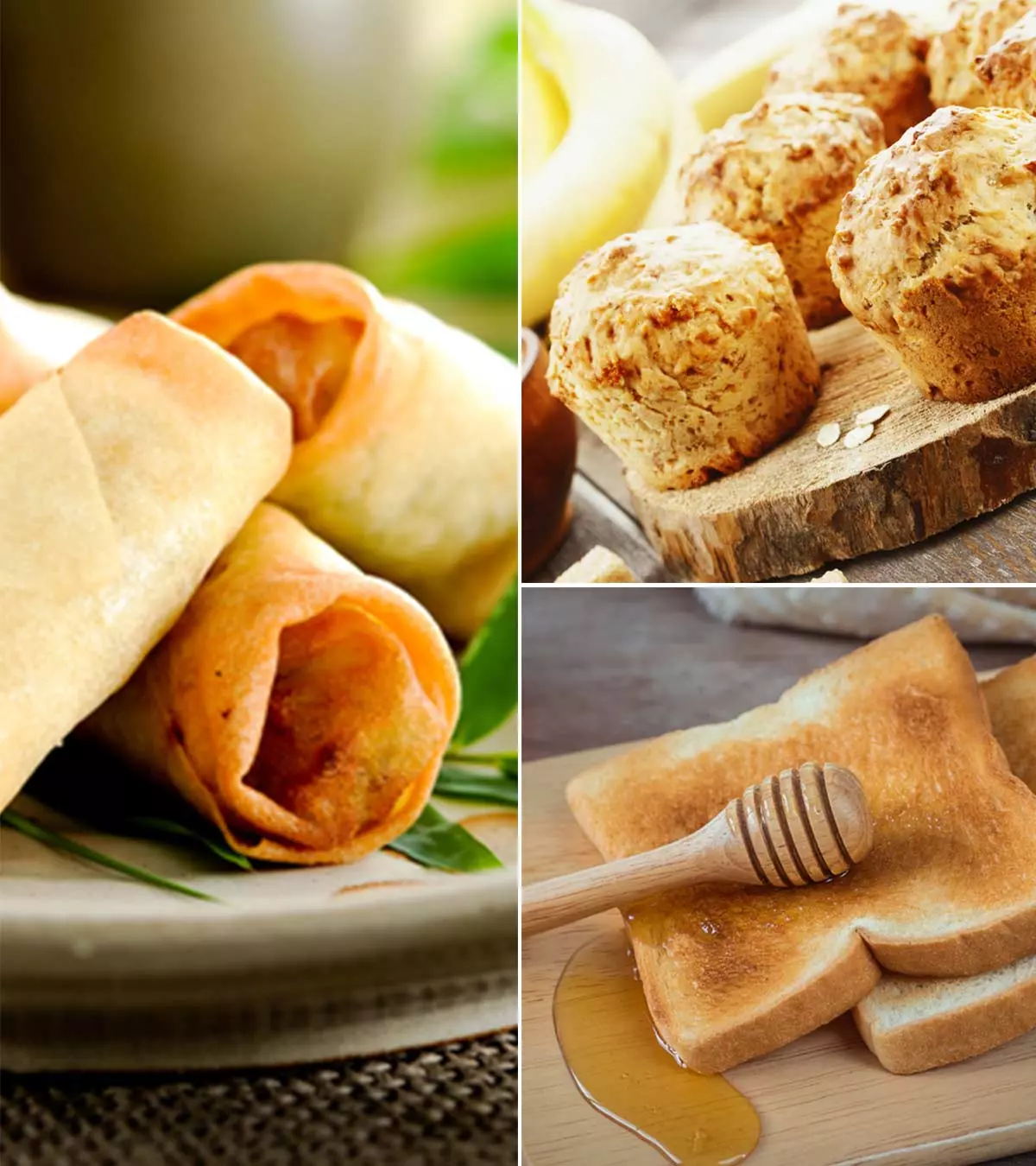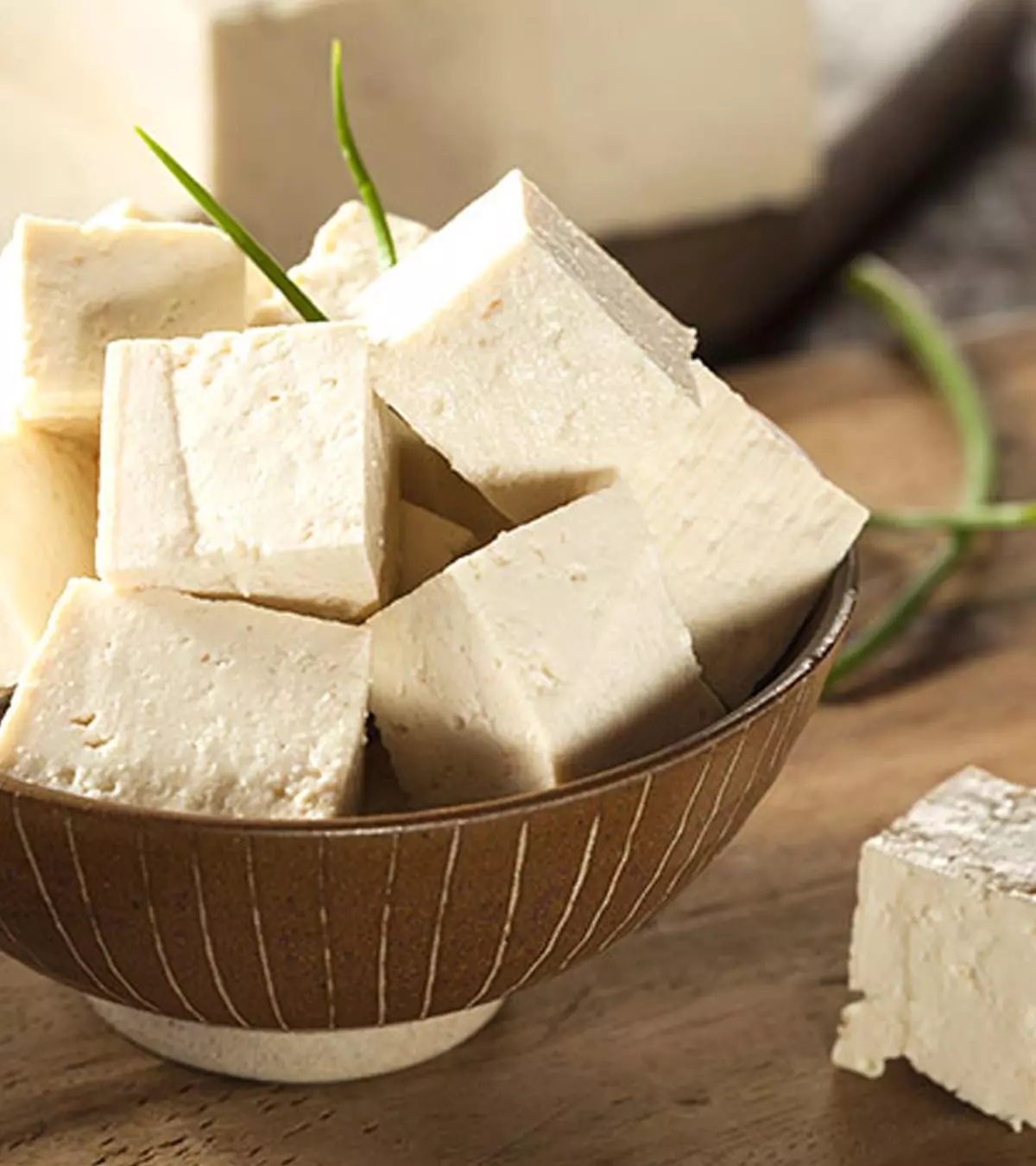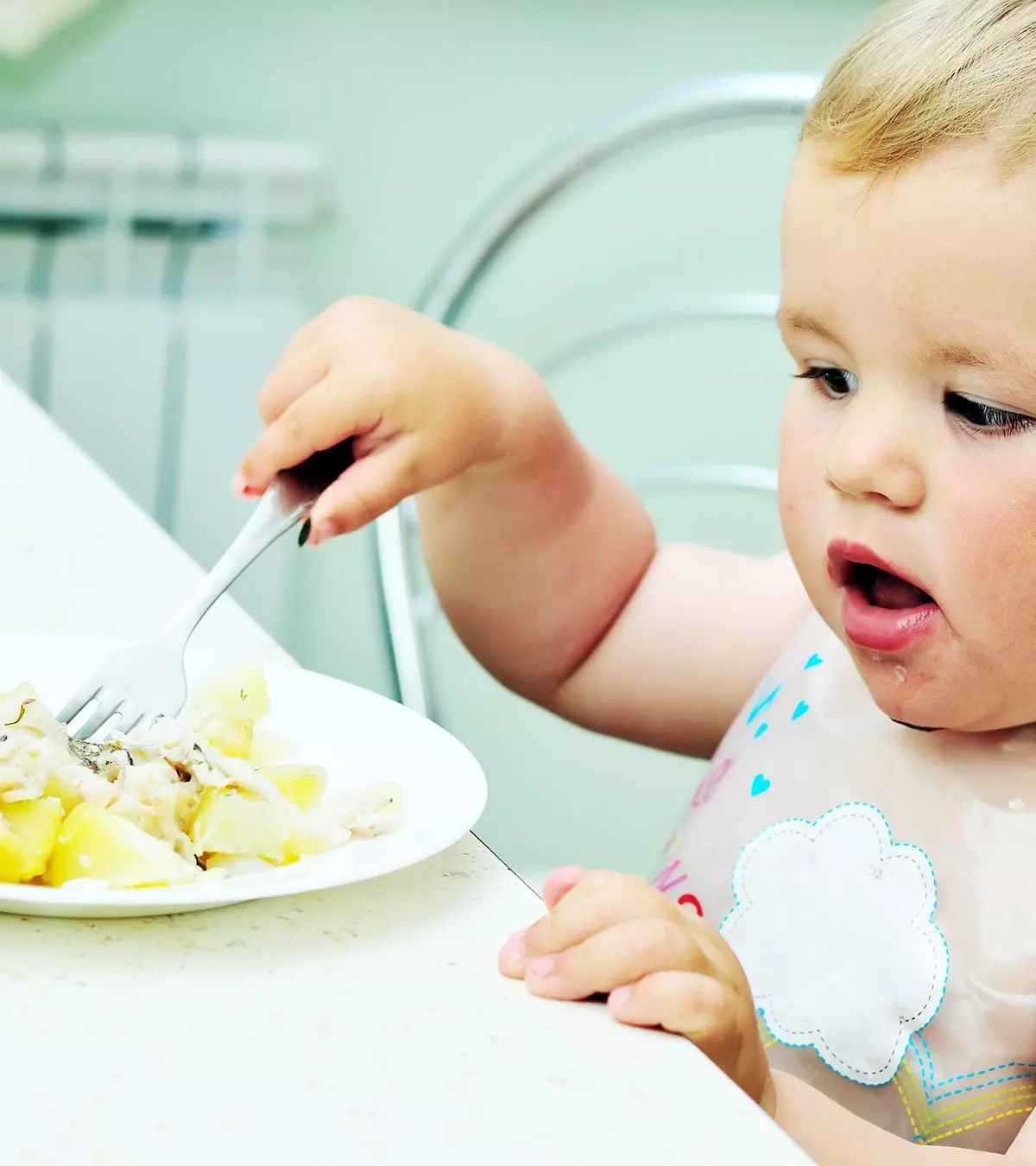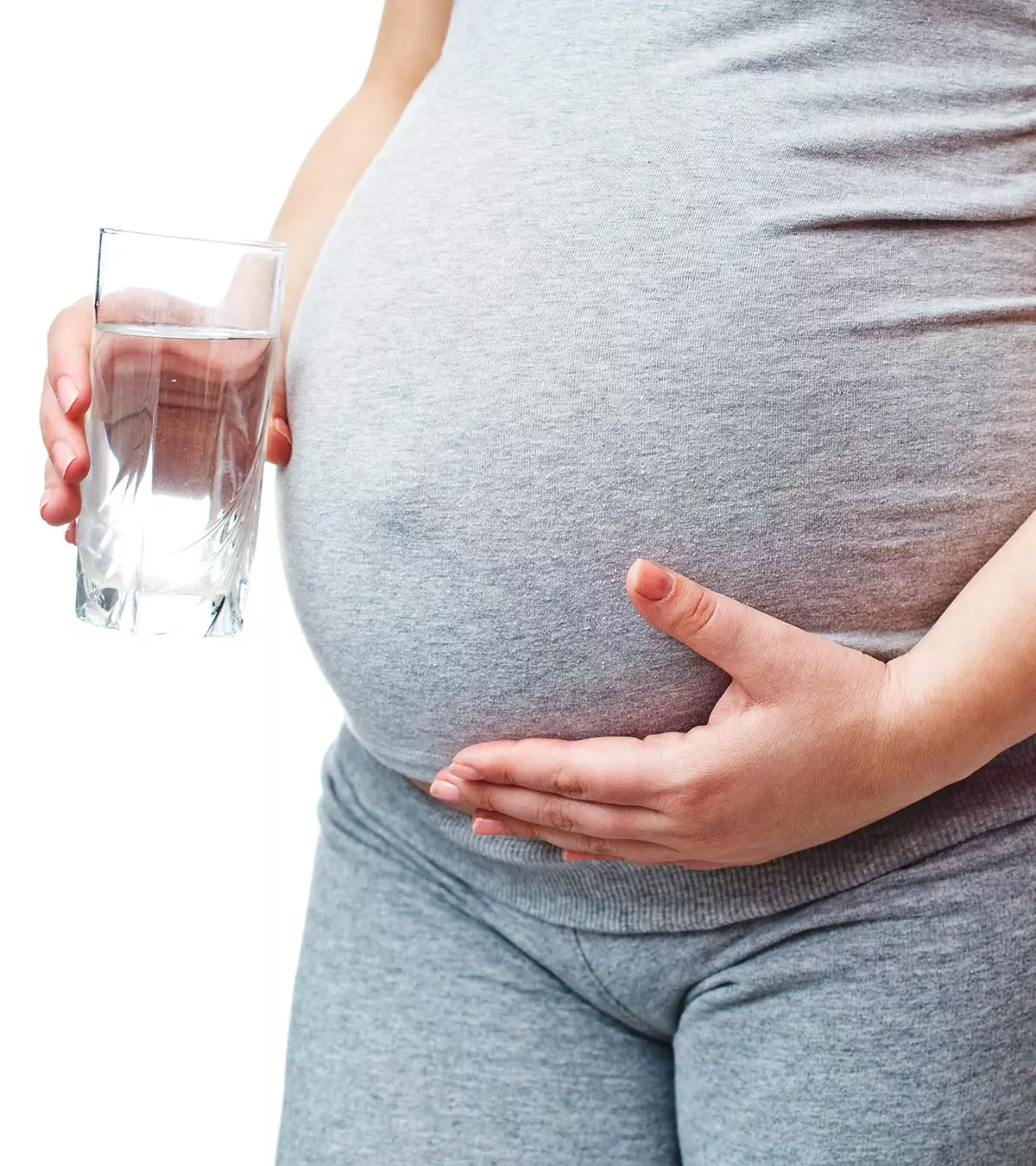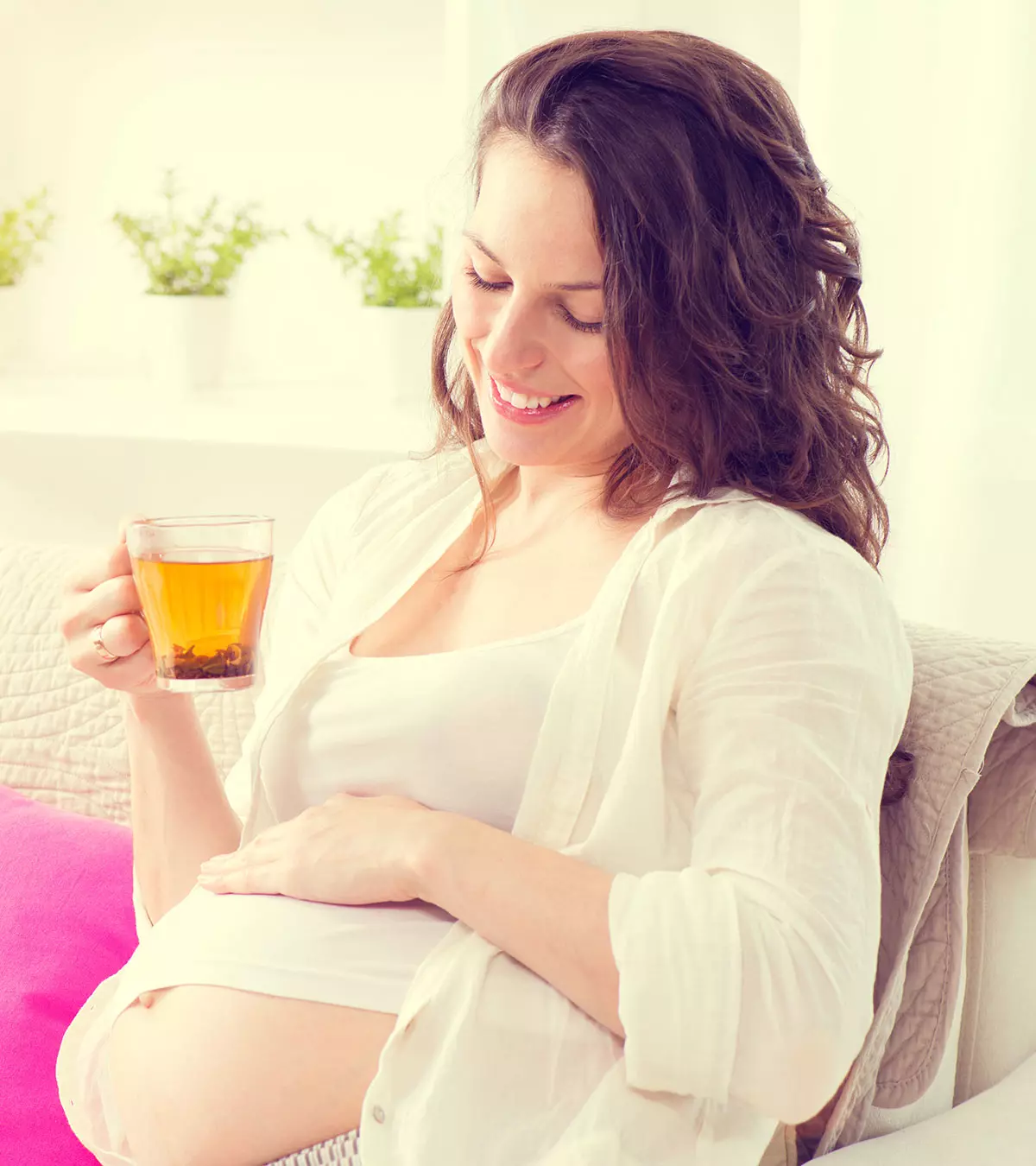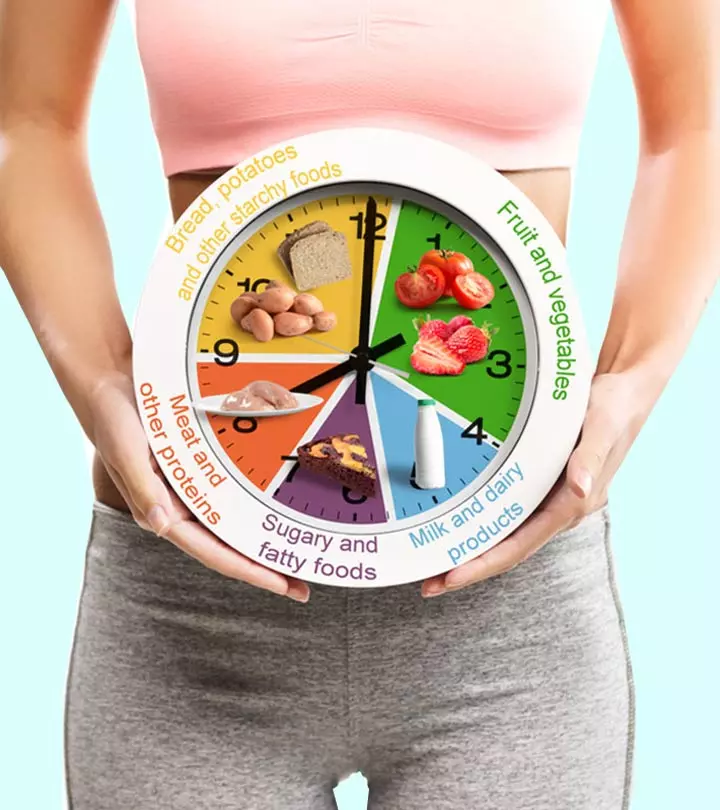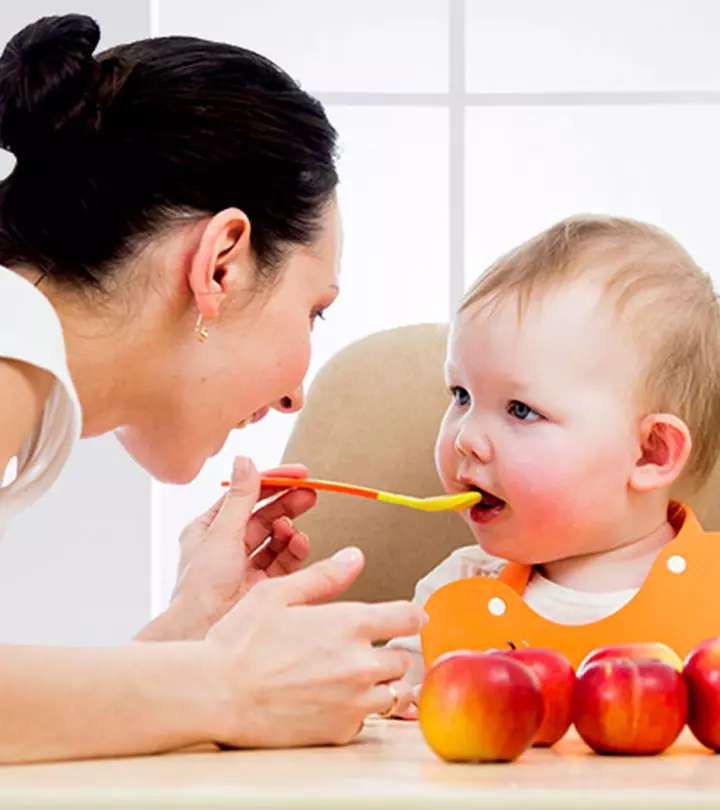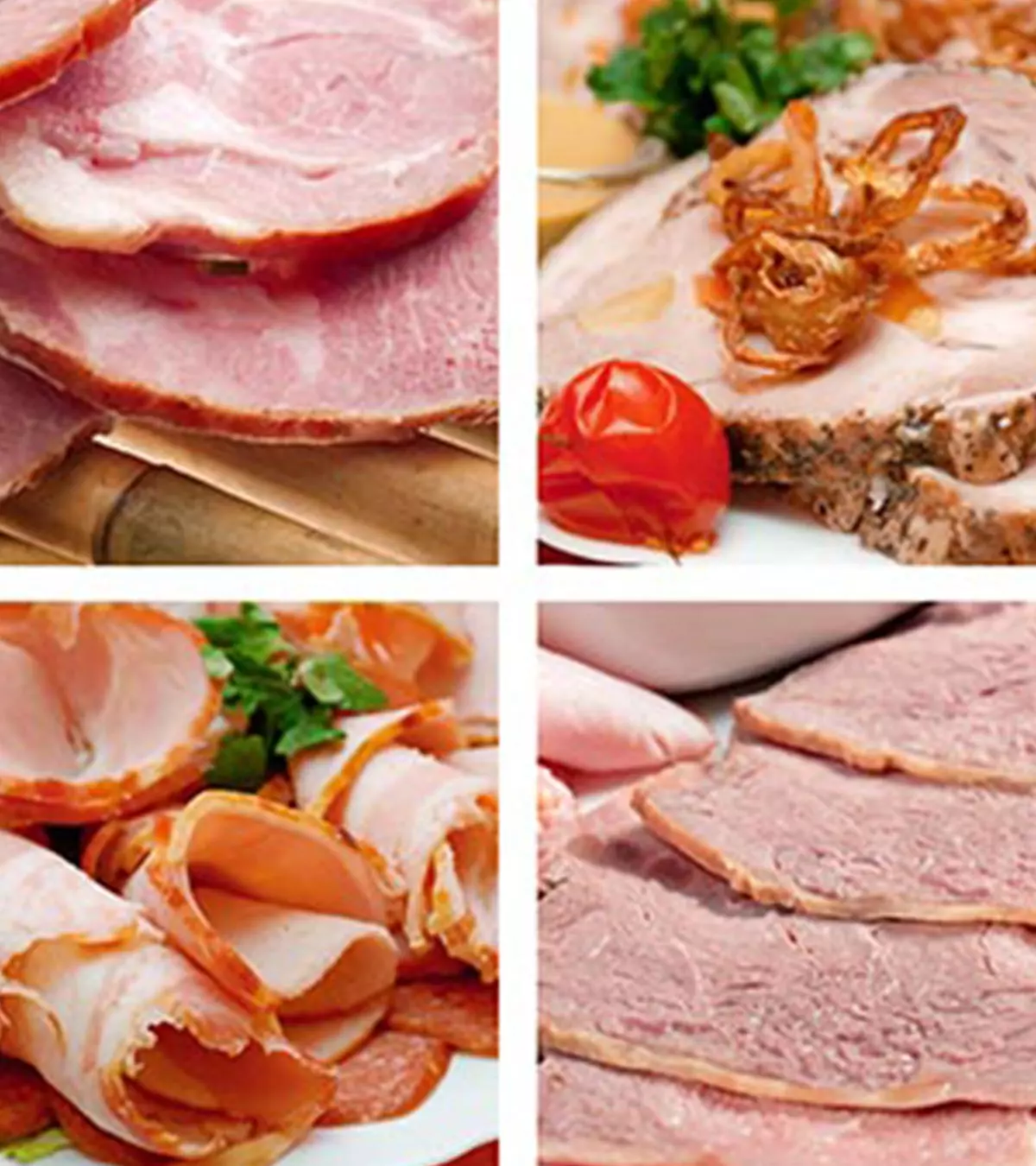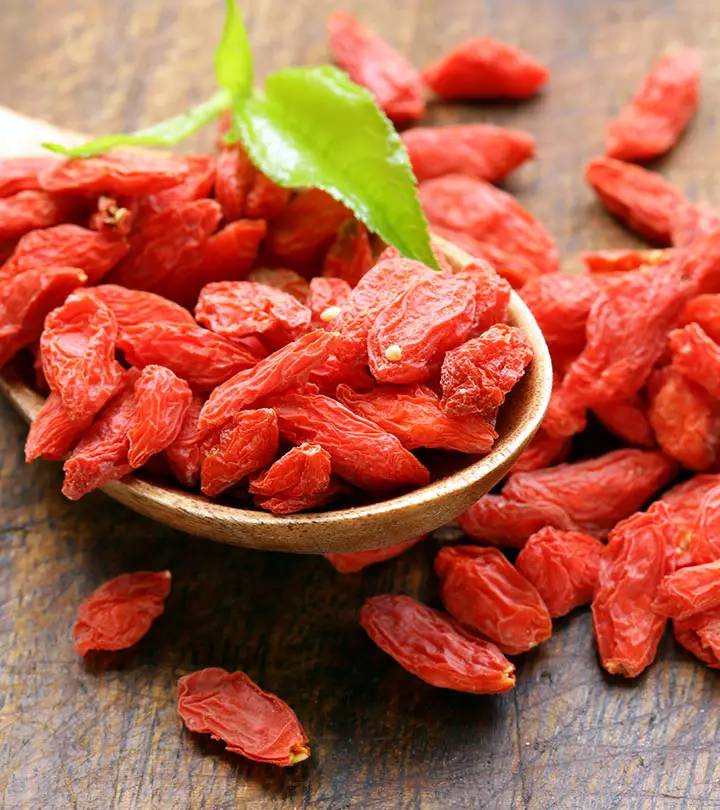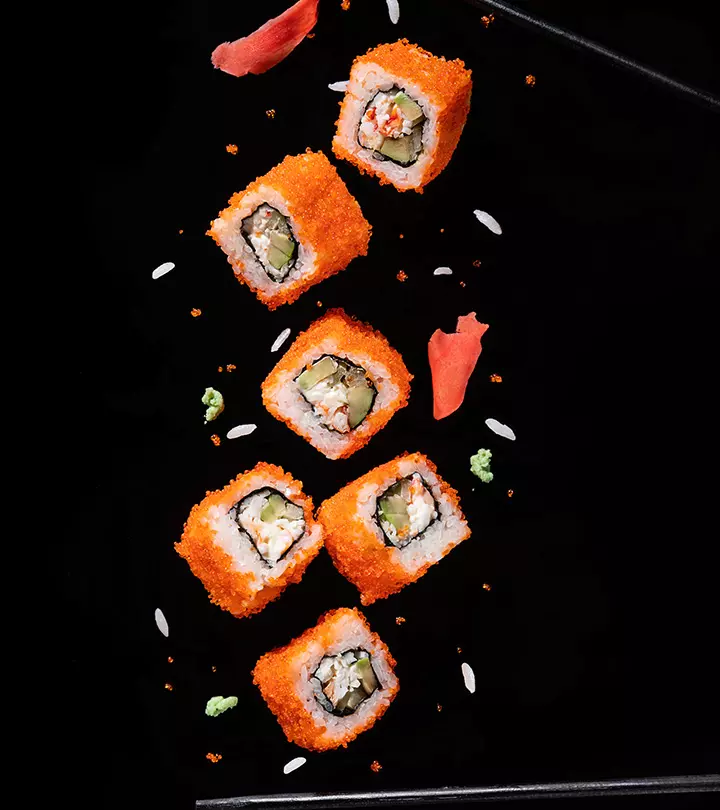
Image: iStock
Sushi is a traditional Japanese dish made with seafood, often raw salmon, tuna, yellowtail, squid, and vinegared sushi rice (sumeshi). However, depending on your preference, you can make different types of sushi, such as Maki (sushi rolls), using ingredients like Nori (seaweed) and vegetables(1). If you consider eating sushi when pregnant, you should eat a properly cooked variety since some are linked to food poisoning and increased mercury exposure.
Typically, sushi is considered a healthy food choice, offering omega-3 fats, seleniumiAn essential mineral found in foods such as nuts, fish, and chicken, involved in thyroid, reproductive, and cell-protective functions. , zinc, vitamin B12, and iodine. Keep reading as we tell you about the safety of sushi, along with the sushi types you can safely eat when pregnant.
Key Pointers
- Pregnant women can eat sushi with properly cooked ingredients.
- Some types of sushi that are safe to consume are Akagai (ark shell), Ayu (sweetfish), and Ika (squid), and the ones you must avoid are Toro, Suzuki, and Ahi (yellowfish tuna), among a few more.
- Pregnant women can consume a sushi roll with well-cooked seafood, fish, or meat, and some safe sushi recipes to try at home are salmon sushi and vegan sushi rolls.
Can Pregnant Women Eat Sushi?
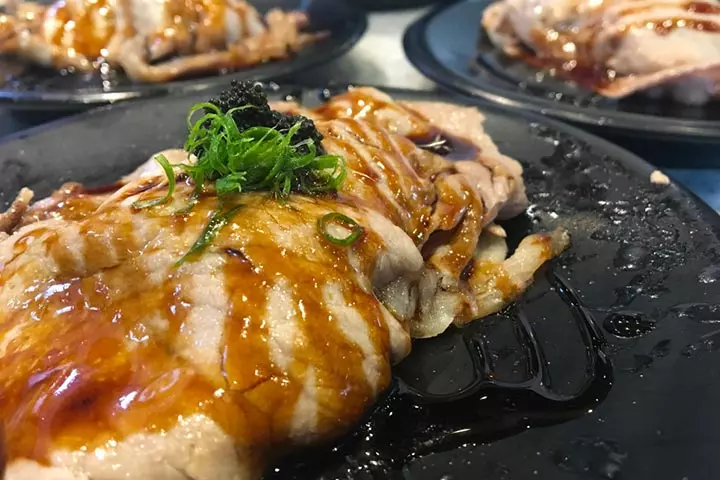
Yes, most pregnant women can eat sushi made with properly cooked, low-mercury fish or seafood. You can also eat vegetarian or vegan sushi. However, you should avoid consuming sushi made with raw or undercooked fish or seafood. It is vital because raw or undercooked fish or seafood is likely to contain harmful microbes and parasites (2). Besides, they may contain high amounts of mercury.
Pregnancy naturally lowers your immunity, raising your risk of contracting infections. Hence, take caution while consuming foods, such as sushi, when pregnant. As per the US Department of Health and Human Services’s recommendations, all seafood must be cooked at 145°F (62.8°C) (3). Cooking food to an appropriate temperature helps kill harmful pathogens that can affect your and your unborn baby’s health.
What Are The Possible Health Risks Of Eating Sushi?
Sushi is often made with raw seafood and fish that are likely to contain harmful pathogens, such as Listeria, Salmonella, and Toxoplasma gondii. Consuming sushi infested with these pathogens can cause food-borne illnesses.
Infection with Listeria bacteria can cause Listeriosisi, which can have severe consequences for pregnant women and their unborn babies. According to the Centers for Disease Control and Prevention, one in 25,000 pregnant women get infected by Listeria in the US. One in four women who get this illness has the risk of losing their pregnancy or their baby shortly after birth (4). In addition to Listeriosis, pregnant women must be cautious about toxoplasmosis caused by Toxoplasma gondii. The most common symptoms of these infections are vomiting, diarrhea, fever, muscle aches, and abdominal cramps.
A mother can pass both these infections to her baby, leading to mild to severe complications, such as (5) (6):
- Nutrient malabsorption
- Miscarriage
- Stillbirth
- Preterm labor and premature birth
- Low birth weight
- MeningitisiInflammation of the protective membranes and fluid that surround the brain and spinal cord.
Another risk is mercury poisoning (methylmercury). Raw fish, such as yellowfish tuna, horse mackerel, and swordfish, are some fish that can be high in mercury. Consuming high-mercury fish can cause mercury excess over time, which can pose a threat to maternal health and expose your baby to health risks, such as (7):
- Nervous system damage
- Hearing loss
- Learning disabilities
- Brain damage
What Types Of Sushi Can You Eat During Pregnancy?
According to the US National Resources Defense Council (NRDC) guidelines, the following fish are safe for pregnant and breastfeeding women (8). Pregnant women can consume well-cooked sushi made with these fish and seafood, taking into account their contribution to maternal nutrition. You can enjoy up to two six-ounce servings of these fish and seafood a week (9).
- Akagai (ark shell)
- Anago (conger eel)
- Aoyagi (round clam)
- Awabi (abalone)
- Ayu (sweetfish)
- Ebi (shrimp)
- Hamaguri (clam)
- Hamo (pike conger; sea eel)
- Hatahata (sandfish)
- Himo (ark shell)
- Hokkigai (surf clam)
- Hotategai (scallop)
- Ika (squid)
- Ikura (salmon roe)
- Kaibashira (shellfish)
- Kani (crab)
- Karei (flatfish)
- Kohada (gizzard shad)
- Masago (smelt egg)
- Masu (trout)
- Mirugai (surf clam)
- Sake (salmon)
- Sayori (halfbeak)
- Shako (mantis shrimp)
- Tai (sea bream)
- Tairagai (razor-shell clam)
- Tako (octopus)
- Tobikko (flying fish egg)
- Torigai (cockle)
- Tsubugai (shellfish)
- Unagi (freshwater eel)
- Uni (sea urchin roe)
What Types Of Sushi Should You Avoid?
The tilefish from the Gulf of Mexico, swordfish, shark, and king mackerel are the four fish with the highest mercury levels, and therefore, there are restrictions on their consumption for pregnant women. Pregnant women should abstain from consuming them. Besides these, you should also not consume sushi made with the following fish (8).
- Ahi (yellowfin tuna)
- Aji (horse mackerel)
- Buri (adult yellowtail)
- Hamachi (young yellowtail)
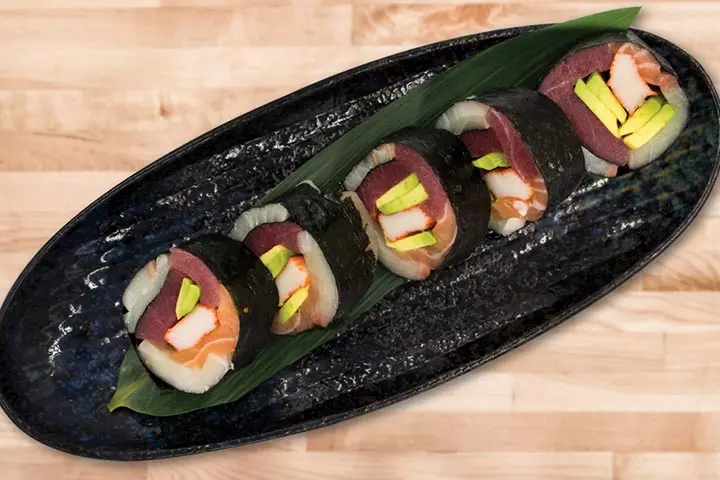
- Inada (very young yellowtail)
- Kanpachi (very young yellowtail)
- Katsuo (bonito)
- Kajiki (swordfish)
- Maguro (bigeye, bluefin, or yellowfin tuna)
- Makjiki (blue marlin)
- Meji (young bigeye, bluefin, or yellowfin tuna)
- Saba (mackerel)
- Sawara (Spanish mackerel)
- Shiro (albacore tuna)
- Seigo (young sea bass)
- Suzuki (sea bass)
- Toro (bigeye, bluefin, or yellowfin tuna)
A fish is considered low- or high-mercury based on the amount of mercury found in its flesh. For instance, if a fish has less than 0.29 parts per million mercury, it’s considered low mercury, whereas it’s called high mercury if its mercury levels are more than 0.3 parts per million.
 Point to consider
Point to considerCan You Eat Sushi Rolls When Pregnant?
Sushi roll or maki is a type of sushi commonly made by wrapping sushi rice and other ingredients, such as fish or meat, and veggies into Nori (seaweed). Pregnant women can eat sushi rolls made with thoroughly cooked fish, meat, or seafood. Eating sushi in moderation can offer pregnant women vital nutrients that may aid fetal development and growth.
Choose low-mercury fish like salmon and tuna while pregnant as it can provide lean, high-quality protein, along with omega-3 fatty acids, iodine, zinc, and selenium. Eat sushi rolls only after ascertaining its ingredients and whether or not the fish, seafood, or meat present in the sushi are thoroughly cooked.
Some experts believe that pregnant women can eat sushi made from frozen raw fish. It’s because freezing fish can kill parasites, making fish safe. However, freezing doesn’t kill all the pathogens present in raw fish. Hence, consuming well-cooked fish or seafood is always a good choice as it is beneficial for fetal health.
Here is some sushi you can safely consume when pregnant to satisfy your cravings.
- California rolls
- Cooked salmon
- Eel rolls
- Shrimp rolls
- Steak and chicken rolls
- Tempura rolls (crab, shrimp, and vegetable)
- Vegetable rolls

Besides these, you can also try some vegan rolls. Some common vegan sushi rolls on a restaurant menu are cucumber maki rolls, cucumber avocado rolls, and shiitake mushroom rolls.
An anonymous expecting mom shares how she relishes sushi during pregnancy while ensuring safety. She says, “Pre-pregnancy, I used to eat sushi at least twice a week. It’s amongst my favorites, especially after becoming pregnant, and whereas so much of what I used to love no longer appeals, sushi still is a major craving.
“I had some trepidation initially, but I’ve been having it once a week for the past two months. I order the shrimp avocado roll (the shrimp is cooked), the eel avocado roll (the eel is cooked), or one of the vegetarian rolls (i).”
 Be watchful
Be watchfulPregnancy-Safe Sushi Recipes You Can Try At Home
Let’s look at some interesting and pregnancy-safe sushi recipes you can try making at home that can be added to your maternal diet.
Note: If you are making sushi at home, freeze the fish for at least four days before using it.
1. Rainbow sushi
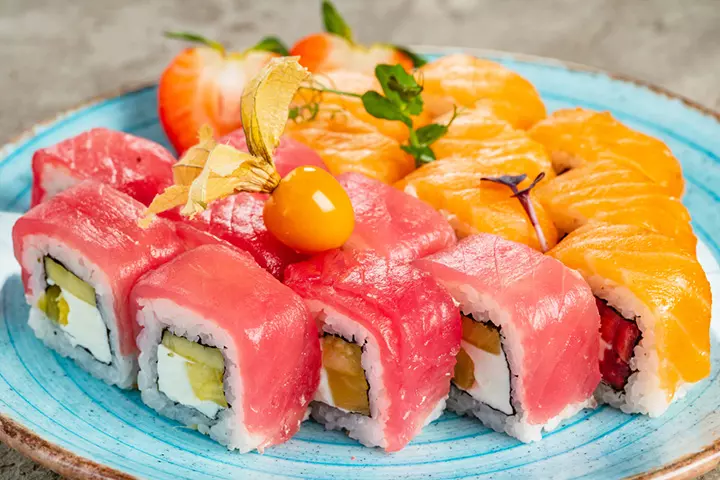
You will need:
- 1 cup cooked rice
- ½ cup red and green bell peppers (sliced)
- ½ cup beets (shredded)
- ½ cup cucumber (shredded)
- ¾ cup carrot (shredded)
- 1 avocado (peeled, cored, and sliced)
- 1 Nori sheet (halved)
- 1tsp sesame seeds
- 2tbsp rice vinegar
How to make:
- Add rice vinegar to rice and mix well to season all the rice grains.
- Now, place a Nori sheet on a sushi mat and spread half a cup of cooked rice on each Nori sheet and top it with avocado and veggies.
- Sprinkle sesame seeds and tightly roll the sheet into a cylindrical shape. Remove the sushi mat and place the sushi roll on a plate. Repeat the process with the remaining rice.
- Cut the sushi rolls into two to three-inch-thick pieces using a sharp knife. Enjoy sushi with a healthy dipping sauce of your choice.
2. Salmon sushi

You will need:
- 1 cup short-grain white rice, (cooked)
- 3oz. salmon (skin removed)
- 2 Nori sheets (toasted)
- 1 carrot (peeled and julienned)
- 1 English cucumber (julienned)
- ½ avocado (thinly sliced)
- 1tbsp sesame seeds (toasted)
- 1tbsp seasoned rice vinegar
- 1tbsp sugar
- 1tsp salt
- ½ tsp pepper powder
How to make:
- Put rice, rice vinegar, sugar, and salt in a bowl. Mix well and keep the bowl aside.
- Preheat the oven to 400°F (204°C). Line a baking sheet with parchment paper and set it aside.
- Season the salmon with half a teaspoon of salt and one-fourth teaspoon of pepper powder on each side. Transfer the fish to the baking sheet and roast for ten minutes until the fish is just cooked through.
- Take the baking sheet out of the oven and set it aside to cool. As the fish cools a bit, flake it with a fork into bite-sized pieces.
- Put julienned carrots, cucumbers, and avocado slices in separate bowls.
- Lay a sushi rolling mat and place a Nori sheet on the mat, shiny side down. Wet your hands with some water and spread about a three-fourth cup of rice across two-third of the Nori sheet, leaving some empty space at the top of the Nori sheet.
- Then, from about an inch from the bottom of the rice, arrange a layer of carrots, followed by cucumbers, a spoonful of salmon, and a few avocado slices.
- Sprinkle some sesame seeds over the top and roll the sushi mat upwards, firmly.
- Transfer the roll to a plate and cut it into two to three-inch-thick pieces using a sharp knife. Repeat with remaining rolls until the ingredients finish.
- Serve baked salmon sushi rolls dipping sauce of choice.
 Quick tip
Quick tip3. Vegan sushi rolls

You will need:
- Nori sheets
- 1 cup sushi rice (cooked)
- ½ cup avocado (chopped)
- ½ cup silken tofu (cut into strips)
- 3tbsp vegan mayo
- 3tbsp rice vinegar
- 1tbsp brown sugar
- 1tsp sesame seeds
- 1tsp salt
How to make:
- Mix vinegar, sugar, and salt in a small bowl until the sugar dissolves properly.
- Pour this mixture into the rice and mix well. Let the rice sit for ten minutes.
- Now, place the Nori sheet on the sushi mat with the rough side facing up. Apply the rice to the Nori sheet in a thin layer, covering all edges.
- Sprinkle the sesame seeds over the rice and place a piece of plastic wrap on the rice. Flip it over, facing the rice on the Nori sheet.
- After flipping, spread some mayo on the Nori sheet and layer it with avocado and tofu. Next, roll over the sushi mat so that the rice layer makes the outside of the roll and the Nori sheet inside.
- Put the roll on a plate and slice it into two to three-inch-thick pieces using a knife. Eat with a dipping sauce of choice.
Frequently Asked Questions
1. What happens if I eat sushi before I know I am pregnant?
Sushi may cause no harm when consumed before pregnancy if you choose fresh, well-cooked, clean, low-mercury fish. However, you should choose sea foods from the best quality stores (10).
2. Can I eat imitation crab sushi while pregnant?
Imitation crab sushi, which is properly cooked and prepared from low-mercury fish, could be consumed in moderation in pregnancy. However, the reduced protein and increased sodium content of imitation crab meat may not provide enough nutrition (11). Women considering imitation crab in pregnancy should consult their healthcare provider about suitable alternatives.
3. How does the preparation and handling of sushi impact its safety for pregnant women?
Storing raw and cooked sushi ingredients at the appropriate temperatures can help prevent bacterial growth. While handling and preparation, following hygiene practices, such as frequent hand washing, wearing gloves, and using clean utensils and surfaces, can help avoid cross-contamination.
4. How can pregnant women balance their cravings with the safety concerns of eating sushi?
Pregnant women craving sushi can consume vegetarian rolls or sushi made with cooked seafood. These options can help eliminate the risk of bacterial or parasitic contamination.
5. How many sushi rolls can a pregnant woman eat?
No limit exists on how many sushi rolls a pregnant woman can consume. Generally, pregnant women are advised to avoid sushi made with raw fish. Instead, they are encouraged to consume vegetarian sushi or sushi prepared with cooked fish in moderation as a part of a well-balanced diet.
“Can pregnant women eat sushi?” is a common query asked by many women who enjoy this delicacy. Although sushi is considered safe for consumption by pregnant women, they are advised to practice caution if made with uncooked or raw fish or meat. During pregnancy, it is advised to stay conscious about what you eat and how it can affect your baby to avoid complications. Thus, if you decide to have sushi while pregnant, opt for sushi made with cooked ingredients, such as fish meat, or vegetarian options, including tofu.
Infographic: Types Of Sushi Pregnant Women Should Avoid
Raw or undercooked seafood carries the risk of microbial contamination, which is especially harmful during pregnancy. However, properly cooked sushi may be safe. Seafood also has the risk of mercury contamination. The infographic below lists sushi made with certain types of fish that are better avoided during pregnancy.

Illustration: Momjunction Design Team
Illustration: Sushi When Pregnant: Safety Types Risks And Treatment

Image: Stable Diffusion/MomJunction Design Team
Personal Experience: Source
MomJunction articles include first-hand experiences to provide you with better insights through real-life narratives. Here are the sources of personal accounts referenced in this article.
i. Sushi and pregnancy.https://tryinginnyc.blogspot.com/2010/03/sushi-and-pregnancy.html
References
- Sushi Basics.
https://www.eatright.org/food/cultural-cuisines-and-traditions/east-asian/sushi-basics - Can I eat sushi while I\’m pregnant?
https://www.acog.org/womens-health/experts-and-stories/ask-acog/can-i-eat-sushi-while-im-pregnant - People at Risk: Pregnant Women.
https://www.foodsafety.gov/people-at-risk/pregnant-women - People at Increased Risk for Listeria Infection
https://www.cdc.gov/listeria/risk-factors/?CDC_AAref_Val=https://www.cdc.gov/listeria/risk-groups/pregnant-women.html - Food Poisoning During Pregnancy.
https://www.marchofdimes.org/find-support/topics/pregnancy/food-poisoning-during-pregnancy - Food Poisoning During Pregnancy.
https://www.uofmhealth.org/health-library/ug2967 - Fish & Pregnancy: What is Safe to Eat?
https://www.healthychildren.org/English/ages-stages/prenatal/Pages/Fish-Pregnancy-What-is-Safe-to-Eat.aspx - NRDC: Mercury Contamination in Fish – Safe Sushi Guide.
https://www.nrdc.org/sites/default/files/sushi.pdf - Is Sushi Safe for Pregnant Women?
https://americanpregnancy.org/healthy-pregnancy/is-it-safe/mercury-levels-in-sushi/ - Carolyn Tam et al., (2010); Food-borne illnesses during pregnancy: prevention and treatment.
https://pubmed.ncbi.nlm.nih.gov/20393091/ - IMITATION CRAB MEAT.
https://fdc.nal.usda.gov/fdc-app.html#/food-details/1922417/nutrients - 8 Foods to avoid when you are pregnant
https://health.clevelandclinic.org/what-not-to-eat-when-youre-pregnant - People at risk: Pregnant women
https://www.foodsafety.gov/people-at-risk/pregnant-women
Community Experiences
Join the conversation and become a part of our nurturing community! Share your stories, experiences, and insights to connect with fellow parents.
Read full bio of Dr. Sonal Dhemla
Read full bio of Swati Patwal
Read full bio of Rebecca Malachi
Read full bio of Aneesha Amonz





